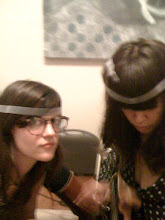
Points of Contact:
Jim Allen, Len Lye, Hélio Oiticica
11 December 2010 – 27 February 2011
Govett-Brewster Art Gallery
Corner King and Queen Streets
Private Bag 2025
New Plymouth
New Zealand
www.govettbrewster.com
Points of Contact joins a number of recent surveys that challenge the European and North American art historical paradigm, proposing and examining instead parallel and specific art historical trajectories outside these centres, in both their local and global dimensions. As opposed to traditional Art Historical canons which typically preempt Minimalism or Formal American Abstraction, this exhibition places Kineticism as precursor to post-object art in NZ.
Govett-Brewster Art Gallery presents Points of Contact: Jim Allen, Len Lye, Hélio Oiticica, an exhibition that traces the historical and conceptual connections between New Zealand artist Jim Allen (b.1922), a significant figure in the development of post-object practices in New Zealand, and two of his greatest influences: expatriate experimental filmmaker and kinetic sculptor Len Lye (1901-1980) and Brazilian artist Hélio Oiticica (1937–1980).
In 1968-9, while head of the Sculpture department at Elam School of Art, Allen traveled to London and New York to visit art schools and respectively encountered the works of Hélio Oiticica and met Len Lye. Interested in kinetic sculpture Allen visited critic and curator Guy Brett in London shortly after the publication of his book Kinetic Art. Allen saw much of the work by Oiticica that went into the Whitechapel Experiment, stored in Brett's apartment leading to this exhibition. Oiticica's series of Bólides and Parangolés, penetrable environments and capes, tents and banners designed to be worn or inhabited while moving to the rhythm of samba made a deep impression on him. On that same trip, Allen also met Lye in New York. Lye had been a pioneer of experimental film in the 1930s in London, and went on to make kinetic sculpture in the 1950s and 60s after moving to New York.
Absorbing these and other influences, Allen's 'environmental structures' and performances staged upon his return marked a radical departure for the artist and established him as the primary figure of post-object art in New Zealand in the late 1960s and 70s. In his pedagogical role at Elam College of Art, Allen lead a new generation of artists to new post-object concerns with space, movement and spectatorship.
Along with significant works by Lye and Oiticica, Points of Contact reassembles for the first time the works of Allen's seminal 1969 Small Worlds exhibition at Barry Lett Gallery in Auckland. The reconstruction of the two environments Space Plane 1969 and The Water Pillow 1969 completes a series that were instrumental to the artist's development. The exhibition also features a restaging of one of Allen's most emblematic performances, the 1974 three-part performance Contact. The ephemeral nature of post-object art, which emphasised processes over material objects, has meant that much of this work has disappeared and exists only in photographic records and first-hand accounts. None of Allen's works of this period remained but the rare exception New Zealand Environment No. 5 (1969) which was acquired by the Govett-Brewster. Allen's works are strongly linked to the direction and origins of the Govett-Brewster, founded in 1970, and its strong history of supporting the avant-garde art of this period.
Points of Contact examines the connecting threads of influences of post-object art in New Zealand led by Allen, which unlike its American counterpart derived not from minimalism but from kineticism, an art form focused on movement and light. As Wystan Curnow, Christina Barton, John Hurrell and Robert Leonard in the introduction of Govett-Brewster's 1999 exhibition catalogue Action/Replay state, "The emergence of post-object work in New Zealand coincides with the emergence, not with the supercession, of formalist abstraction as in New York. That is to say, the local post-object moment was not notably mediated by American practices. … If there is a connecting thread, and a group of practices that replaces minimalism as a transition to the post-object, it is kineticism, focused on movement and light."

No comments:
Post a Comment